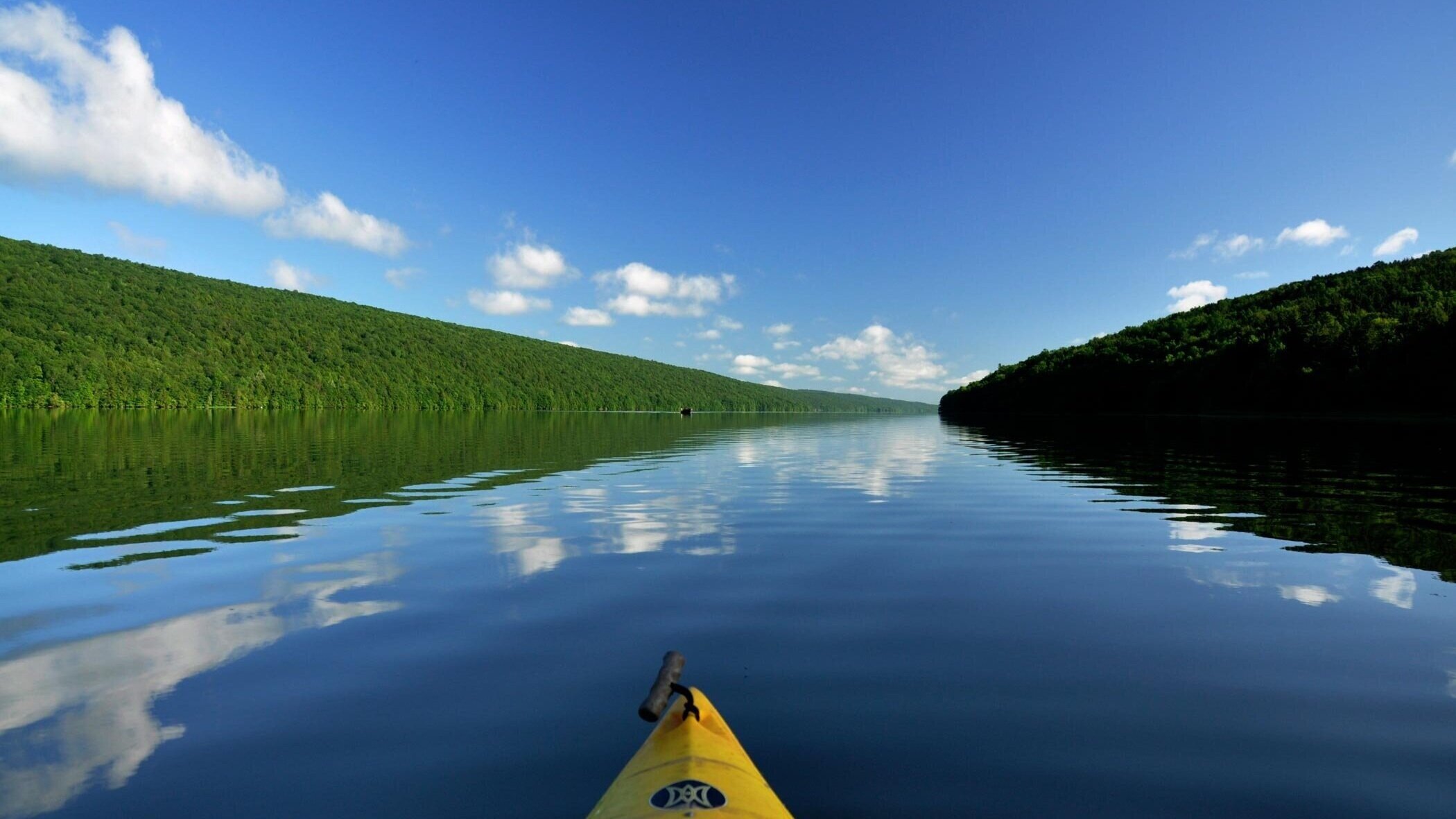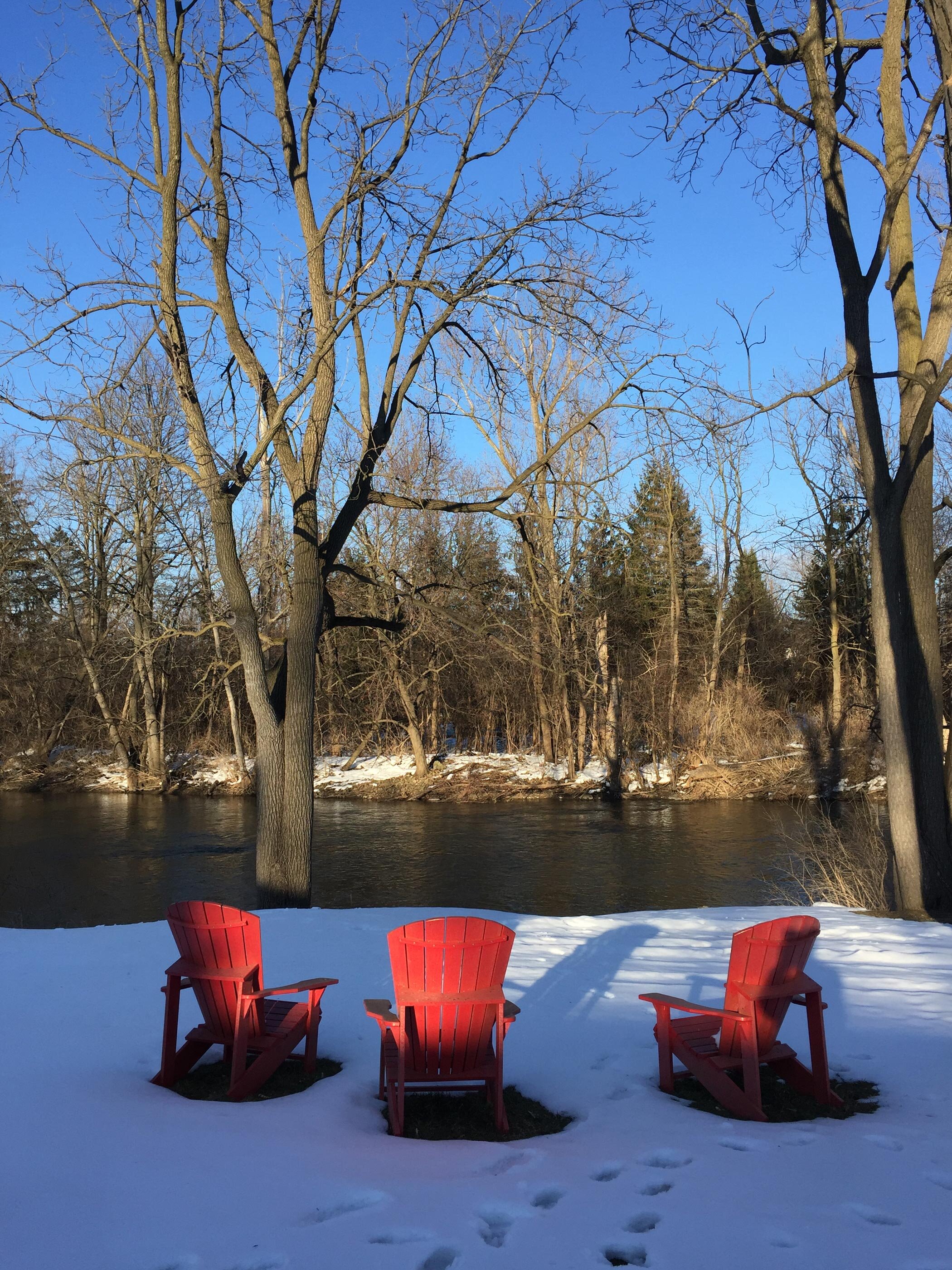
Learn
Solutions to climate change are not one-size-fits-all. Our Genesee-Finger Lakes Region’s strategies will be different from those used in communities in Illinois, West Virginia, or Utah because the bulk of our emissions come from different sources. In addition, the needs and priorities of local residents and community organizations will influence how our region responds to climate change.
Having easy access to comprehensive, accurate information about our particular region is critical for organizations and individuals that want to take effective action on climate in our region.
Read on for specifics about local emissions sources and current/coming climate impacts!
This one-hour presentation is a great primer on regional climate change causes and impacts. With this knowledge is power…to be a more effective climate solutions accelerator yourself!
Regional Greenhouse Gas Inventory
In 2020, the Climate Solutions Accelerator commissioned a regional inventory of climate-changing greenhouse gas emission sources, to guide a regional collective impact initiative working to co-create and implement a climate action plan. With New York State now requiring substantial, swift reductions in greenhouse gases in order to avert the worst impacts of climate change and achieve the many benefits of climate solutions, an ambitious, informed regional climate plan is critical.
Click on the video above for the full May 20, 2021 presentation of the results, or on the image below to view the presentation slides.
Regional Greenhouse Gas Inventory Presentation Slides—click image to open.
Local Climate Impacts
Climate change threatens our region in many ways. In recent years, we have experienced the following consequences of climate change:
Climate change means more summer rain and flooding in Rochester and the Finger Lakes
Six consecutive 90-degree days during the hottest July on record
Back-to-back ‘hundred-year’ floods in Avon, Livingston County
According to scientists at Cornell University, average temperatures across the state have risen 2.4 degrees Fahrenheit since 1970. The NYS Department of Environmental Conservation describes how spring begins a week earlier than it did a few decades ago.
In other words, the impacts of climate change are already occurring, and their severity will increase over time, with significant consequences for our local economy and public health. Though some climate impacts present opportunities for our region — for example the ability to grow new types of crops that require warmer temperatures — on the whole, the expected local impacts of climate change will be expensive and dangerous for our communities.
Fact Sheets: Climate Change in the
Genesee-Finger Lakes Region
The Accelerator, in partnership with the Stockholm Environment Institute, has produced a series of sector-specific fact sheets on the threats and opportunities that climate change poses for our region. For more information on how climate change impacts agriculture, economic development, equity, and health in our region and to learn how to take action to mitigate these impacts, use the buttons below:
More information on regional impacts:
The City of Rochester’s Climate Vulnerability Assessment
The Environmental Law and Policy Center’s Assessment of the Impacts of Climate Change on the Great Lakes
NYS’s ClimAID report
Comfort Zone, a locally produced documentary on the local causes and consequences of climate change

Local Emissions Sources
It is hard to find reliable, comprehensive, current data on local emissions sources for our region, which is why the Climate Solutions Accelerator is developing a robust data management platform to track our region’s progress toward decarbonization. The regional greenhouse gas inventory the Accelerator commissioned (see above), in addition to the City of Rochester’s Climate Action Plan and NYPA’s Five Cities Energy Plan, clearly show that buildings and transportation are our nine-county region’s primary sources of greenhouse gas emissions.
We have cold winters here in the Genesee-Finger Lakes region, so the fossil fuels we burn for heat are particularly problematic. Though some local residents still heat with oil, most people burn natural gas to stay warm. When burned, both oil and natural gas emit carbon dioxide, the most abundant greenhouse gas that contributes to climate change. Before it’s burned, natural gas is mostly methane. This greenhouse gas is 20 times as potent as carbon dioxide, so even in small amounts, methane is harmful to our climate. In addition, methane has been shown to leak into the atmosphere when natural gas is extracted and transported. As a result, the use of natural gas is THE primary source of our region’s emissions.
Other sources of local emissions include transportation, electricity generation, waste management, livestock production, fertilizer use, and industrial processes that release fluorinated gases.
Priority Climate Solutions
Heat Pumps and Energy Efficiency
We don’t have to use fossil fuels to heat our buildings! A combination of insulation, air-sealing, and all-electric heat pumps and appliances will allow us to completely eliminate the need for fossil fuel combustion in our homes. This is both good for our climate and our health (because it improves indoor air quality and eliminates the risk of dangerous natural gas leaks). The gold standard for climate-friendly building construction is Passive House design. In 2017, a passive house in Honeoye Falls was named the most energy efficient home in the United States and Canada!
To learn how to eliminate fossil fuels from your home, check our our Go All Electric initiative and Heat Smart Monroe clean heating and cooling campaign!
Green Transportation
Because transportation accounts for approximately 40% of greenhouse gas emissions in New York State, building a sustainable, multi-model transportation system is an essential action for reducing local greenhouse gas emissions and mitigating climate change. This system should include high-functioning public transit, bike and pedestrian-friendly transit options, and electric vehicles and EV charging infrastructure. Prioritizing emissions-free transportation has many co-benefits, such as improving air quality and public health, making our neighborhoods more walkable and economically vital, and increasing access to jobs and services throughout the region.
Reconnect Rochester, Greater Rochester Clean Cities, and the Genesee Transportation Council are great sources of additional information about local transportation issues. In addition, the City of Rochester has a Comprehensive Access and Mobility Plan.
Sustainable Land Use and Community Planning/Design
The efficient use of land and smart design of our “built environment” is essential to reducing local greenhouse gas emissions. Through eco-friendly zoning and planning, we can structure our communities in ways that reduce dependence on high emissions activities, such as operating private motor vehicles. As the City of Rochester’s Climate Action Plan explains, “Land use planning represents an opportunity for the community to address carbon emissions by fostering vibrant, walkable neighborhoods and supporting alternative forms of transportation.” For more information on why good land use policy, community planning/design, and location efficiency are vital to improving our environment, check out the following video.
Photo: WHEC
Climate-Smart Agriculture
Climate-smart farming practices must also be a critical aspect of our region’s efforts to address climate change. The State’s Climate Leadership and Community Protection Act calls for 85% emissions reductions by 2050. To reach net-zero emissions, we must offset the final 15% in greenhouse gas emissions. Agricultural and forested lands play a major role in carbon sequestration or the absorption of carbon emissions out of the atmosphere.
Not all agriculture is helpful in sequestering carbon, however. Agricultural production can worsen climate change in instances where it is heavily reliant on synthetic fertilizers and pesticides or involves industrial animal production. Our region’s farmers are also more likely to experience the consequences of climate change first, as extreme weather impacts crop production, threatening not only farmer livelihoods, but our regional food system.
Climate-smart farming practices can bolster the resiliency of agricultural lands and serve as effective carbon sinks. Plants are one of our best and most efficient means of removing carbon dioxide from the air. Practices such as planting cover-crops and deep-rooted perennials improve soil health by regenerating nutrients and enhancing the soil’s ability to absorb and hold water in both heavy rains and dry periods. Good soil health is key for preventing soil erosion, sequestering carbon, and improving agricultural resiliency in the face of extreme weather, such as droughts, floods, and high-winds.
With approximately 21% of the state’s total farmland and roughly $1 billion in local revenue, the Genesee-Finger Lakes Region is poised to be a leader in climate-smart agricultural production. For more information on climate and agriculture, see Northeast Organic Farming Association of New York or Cornell’s Climate Smart Farming program, as well as our local Cornell Cooperative Extension offices.
Renewable Energy Generation
According to the New York Independent System Operator Power Trends Report, our region’s electricity supply is already about 90% fossil fuel free. This is good news, especially as we move toward using electricity to meet our heating and transportation needs. However, as we increase local demand for electricity, we need to make sure this energy comes from renewable sources, such as wind and solar, and access to renewables is equitably distributed. Community Choice Aggregation is a tool that municipalities in our region are using to increase the use of affordable, locally sourced clean electricity.
For more information on the benefits and challenges of increasing renewable energy generation in our region, check out the United Solar Energy Supporters of New York and Alliance for Clean Energy New York.




